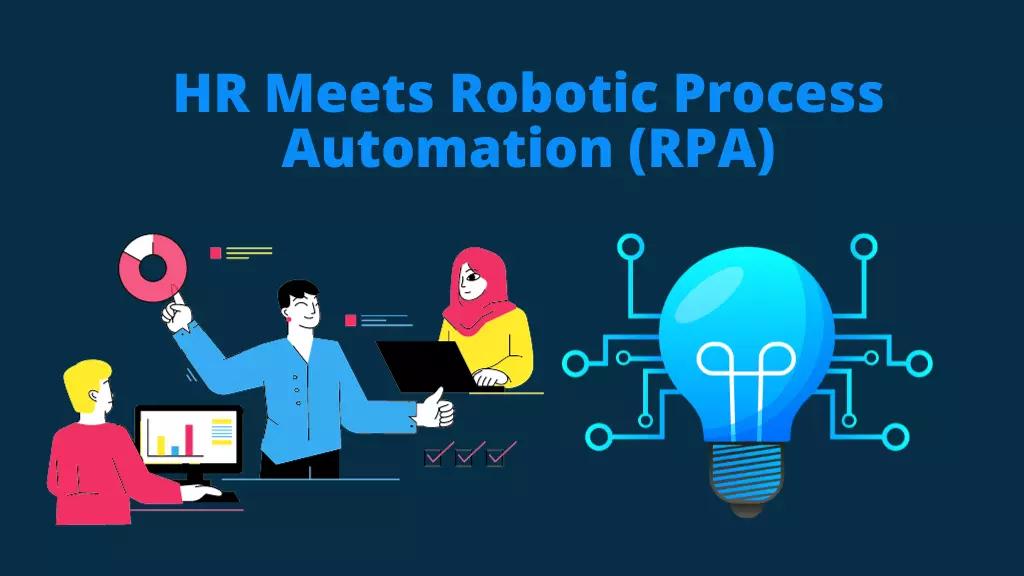The advent of Robotic Process Automation, or RPA, is a game-changer in the realm of Human Resources. Essentially, RPA refers to software robots that can mimic human action and perform repetitive tasks more efficiently.
For an HR department often overloaded with administrative work, incorporating RPA would mean freeing up valuable time. From recruitment to payroll processing and even onboarding new employees, it seems there's little these nifty bots cannot handle, so let’s get stuck into the details of what it can deliver in an effort to understand its impact more thoroughly.
RPA and Employee Onboarding: A Seamless Pairing
Streamlining the onboarding process is a critical part of HR responsibilities. With RPA, that task becomes much easier and less time-consuming. Integrating bots into the system means manual administrative duties traditionally performed by humans can be automated.
Here are some ways in which RPA enhances employee onboarding:
-
Automated Filling of Forms: Bots can enter data into necessary fields automatically, saving hours spent keying in information manually.
-
Swift Document Verification: With especially programmed software 'bots', document verification becomes swift and accurate.
-
Simplified IT Setup: Robots automate setting up new email accounts or access permissions, thereby reducing waiting times for new employees.
When it comes to freeing resources and focus for strategy-centric tasks within HR departments, robust systems employing RPA prove to be an exemplary tool in efficient employee onboarding.
Boosting Efficiency in Recruitment with RPA
The recruitment process can often be a lengthy and complex one. Dealing with hundreds, sometimes thousands of applications requires substantial manual effort. The integration of RPA into HR applications can hugely simplify this task.
By employing bots to scan resumes for specific keywords or criteria agreed upon by the hiring team, the shortlisting procedure becomes faster and more accurate. This way, HR professionals get to focus on other integral aspects of hiring such as interviewing potential candidates or strategizing about efficient workforce planning.
Transforming Payroll Processing through Robotic Process Automation
Payroll processing can be a considerably complicated and time-consuming task. However, the introduction of RPA within payroll software has simplified this burden.
Here are some ways that robotic automation helps streamline payroll:
-
Error Free Calculations: The use of bots ensures accurate calculations every time, minimizing the risk of mistakes often associated with manual processing.
-
Compliance Assurance: Regulatory requirements change over time. Bots can be updated to account for these changes ensuring constant compliance with legal obligations.
-
Time Efficiency: By automating data input and report generation processes, employees previously assigned to these tasks gain more free hours to focus on strategic roles.
In short, bringing RPA into the domain of payroll not only simplifies procedures but also elevates accuracy and efficiency levels, making it an invaluable asset in any HR department.
Future Perspectives: The Long-Term Impact of Integrating RPA in HR
With the rise and successful integration of Robotic Process Automation, it's clear that the future looks promising for RPA within Human Resources. As HR departments continue to adopt and perfect this technology, we can predict several long-term impacts.
-
Enhanced Decision Making: With more accurate data gathered by bots, executives can make more informed decisions about talent management.
-
Increased Productivity: As bots take over mundane tasks, HR professionals are freed up to focus on core functions, resulting in increased productivity.
-
Employee Morale Boost: By removing overly administrative burdens from staff loads, employees experience a boost in job satisfaction.
So ultimately, the marriage between Human Resources and Robotic Process Automation isn't just convenient, but fruitful. Delivering efficiency while freeing time for strategic thinking makes RPA an exciting prospect for any forward-thinking organization, which is why you should consider embracing tools that enable it wherever possible.

